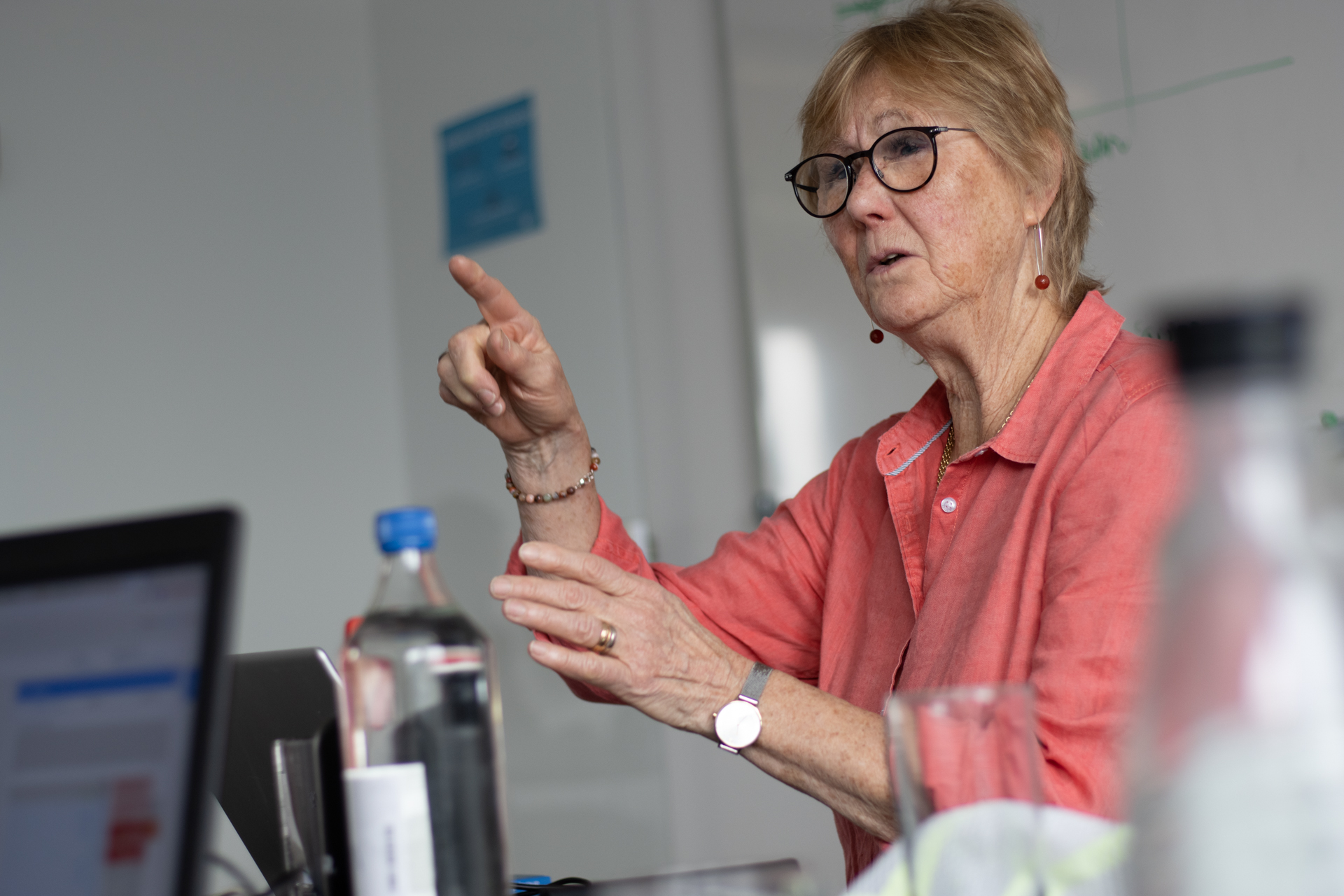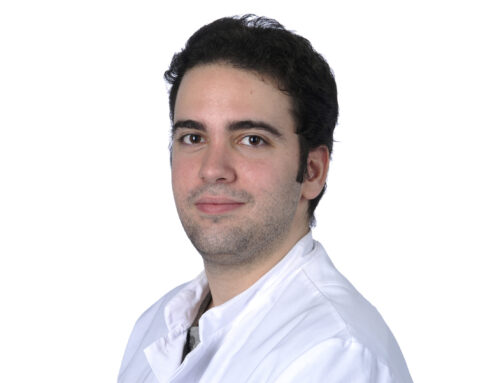Interview with Märta Sund Levander about new approaches in measuring body temperature
Fever is defined in medical literature as a core body temperature above 38 °C1. However, Märta Sund Levander knows that each person has an individual fever threshold and therefore the common definition should be revised. The long-time expert in body temperature measurement is planning a study on this topic using our in-ear sensors. During her visit to our Munich office last month, we spoke with Märta about individual body temperature, the planned study, and important findings from her medical career.
Märta Sund Levander – The Senior Associated Professor at the medical faculty of Linköping University, Sweden has been a nurse for over 49 years and has focused on measuring and interpreting temperature in the human body. During that time she gained a broad clinical practice from intensive care, surgery, primary care and elderly care. She also worked with infection control, preventing nosocomial infections as well as with research as a supervisor in clinical practice. Her dissertation was focusing on the questions “What is normal body temperature?” and “What is fever?” (2004). The last ten years she has spent her time at Linköping University as a teacher. Together with Ewa Grodzinsky, Ingela Hagman and Leif Köldahl she founded OxyTemp Sweden.
Märta, you spent a lot of your career focusing on body temperature: Where does that passion come from?
Ever since I became a nurse I have been asking myself why fever is defined as a body temperature above 38 °C. For example, I haven’t reached 38 °C when I was ill. So I have wondered about that for a long time. When I made the education for a specialist nurse I wrote a bachelor thesis, that was about fever. Then I wrote a master thesis, and that was about fever as well. During that time I got more and more questions. In fact, the longer I worked the more questions I got and I realized that fever is something everyone seems to know everything about. But the base is actually very old fashioned. The common definition of fever is based on studies of the German doctor Carl Wunderlich (1815-1877). So with all the information I got during my education I felt I had to change the way fever is defined. And that’s what I’m still trying to do today.
What do you think needs to be done to change the definition of fever and to “beat” Wunderlich’s standard?
I think it’s a lot about education and understanding. I also think we have great support from “ordinary people” already. Sometimes I think they understand even more directly than the healthcare staff what we’re talking about. So I had a lot of lectures and workshops with producers of medical devices, with students and with clinicians. What I tell about body temperature is not strange to them either and in theory well known. But in practice, we have to reflect on what we are actually doing. To implement this is an ongoing work. And I made the experience that it’s important to never give up.
Based on your experience, is a core body temperature of 37 °C actually normal for most people?
Several studies show that 37 °C is not the mean temperature for the human body.
So the majority of the population is lower or higher?
The majority is lower, about 36 °C. But the variation is rather large. Here I have to add a very important fact: When we are talking about body temperature we have to mention that we have different body temperatures depending on what site you are measuring on. You can never compare any site. You should never do any adjustments from one site to another. It’s because you have gradients within the body. You don’t just have one core body temperature, you have several ones.
Could you tell us about OxyTemp Sweden, the algorithm you invented and what do you want to achieve with it?
OxyTemp consists of me and Ewa Grodzinsky, a biomedical laboratory scientist, PhD with great knowledge in immunology and a research colleague for more than 20 years, Ingela Hardmann, a nurse, who is working with patients at home, and Leif Köldahl, who is a nurse and engineer. Together we have developed an algorithm for calculating individual normal range in body temperature and oxygen saturation. Why have we done that? From more than 20 years of research about body temperature we have learned that there is a large variation between individuals as well as within individuals. Clinically this means that the tradition of cutoff values for normal as well as fever temperature does not suit every individual. The consequence is, especially for frail elderly, that we miss infections. Thus, frail elderly have high morbidity and high mortality in infectious diseases. We have been thinking about this problem for many years. With the new concept of precision medicine we think that we have to change the way of interpreting the values for vital parameters more in accordance with this precision medicine. That is because the current reference values for body temperature, oxygen saturation and other vital parameters are actually based on group level for very healthy individuals. If you have a disease or if you’re on medication you are not included. In addition, it’s almost men that are included in these reference groups. So every time you interpret values on the individual based on these group level cutoffs, there is a risk that you actually miss a changed value for that individual. The consequences are delayed diagnosis, delayed treatment and, especially for frail individuals, increased morbidity and mortality. From this knowledge we realized we have to change our view on reference populations. We argue that we have to include people in their habitual conditions. We also have to include frail elderly as well as small children, teenagers and women, and individuals with diseases and medication. We started to do that for body temperature and now we’re also working on oxygen saturation. The algorithm we created is good to calculate the normal variation for the individual in body temperature and oxygen saturation. And then when you don’t feel well you measure different values and you can calculate or understand the difference from the normal value as a difference instead of the cutoff values we are using today. For example, if you have a normal body temperature of 36 °C, which actually about 25% of the population has, then it might be that 37,2 °C already is the fever temperature for you. The research we have done has led to the conclusion that at least one degree more than we usually have in body temperature plus feeling ill may indicate a fever.

You are part of a group at the ISO organization. Could you tell us more about your work there?
About ten years ago I got the opportunity to be the Swedish expert in the ISO group for clinical thermometers. My intention in that group is to make them understand not only the technical accuracy, which we are excellent in laboratory environments, but also the clinical accuracy. The clinical accuracy refers to what happens when we use the measuring devices on patients. The research I’m involved in is very important to understand what we want from a clinical standpoint: A measuring device that can detect changes in the individual patient’s body temperature. So what drives me in this work is that our research to date should be translated into clinical practice. After all, we feel obligated to work in an evidence-based manner.
cosinuss° has very similar goals. How can we support you in reaching your goals?
I think one important thing is that we can support each other in clinical studies. We want to validate the algorithm. And we want the ear to be the measurement site. You have the device. We have the algorithm. So this is a good base for a collaboration.
Together with cosinuss° you are planning to conduct a study in a Swedish home affiliated hospital unit. What do you want to achieve with it?
The aim of this study is to validate and show that we can detect deteriorated health and infectious diseases earlier when using the algorithm instead of the traditional body temperature and oxygen saturation thresholds. We will conduct the study over several months with real patients in a Swedish hospital. The patients’ vital signs will be measured with the cosinuss° in-ear sensor and documented daily. In this way, we can check whether we can detect infections or diseases earlier using the algorithm than with the conventional thresholds. Thus, with this study we would like to show the advantages of the algorithm for earlier diagnosis in patients.
Is there anything else you want to share with us?
Yes. First, I think it’s very helpful if you know your individual normal body temperature, so that you can tell what temperature is outside your normal range. Second, for me as a healthcare staff, it’s very important to listen to the patients. If the individual doesn’t feel well I should believe that. I think that the temperature grade should not decide whether the individual is well or not. So my core message is: We should believe what the patient is telling us.
Quellen / References
- Fieber: Temperatur-Regulation im Körper, www.internisten-im-netz.de (Abruf: 4.6.2023)






